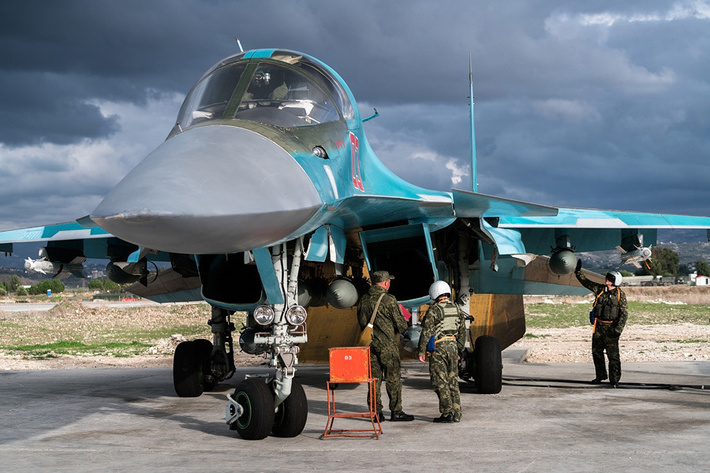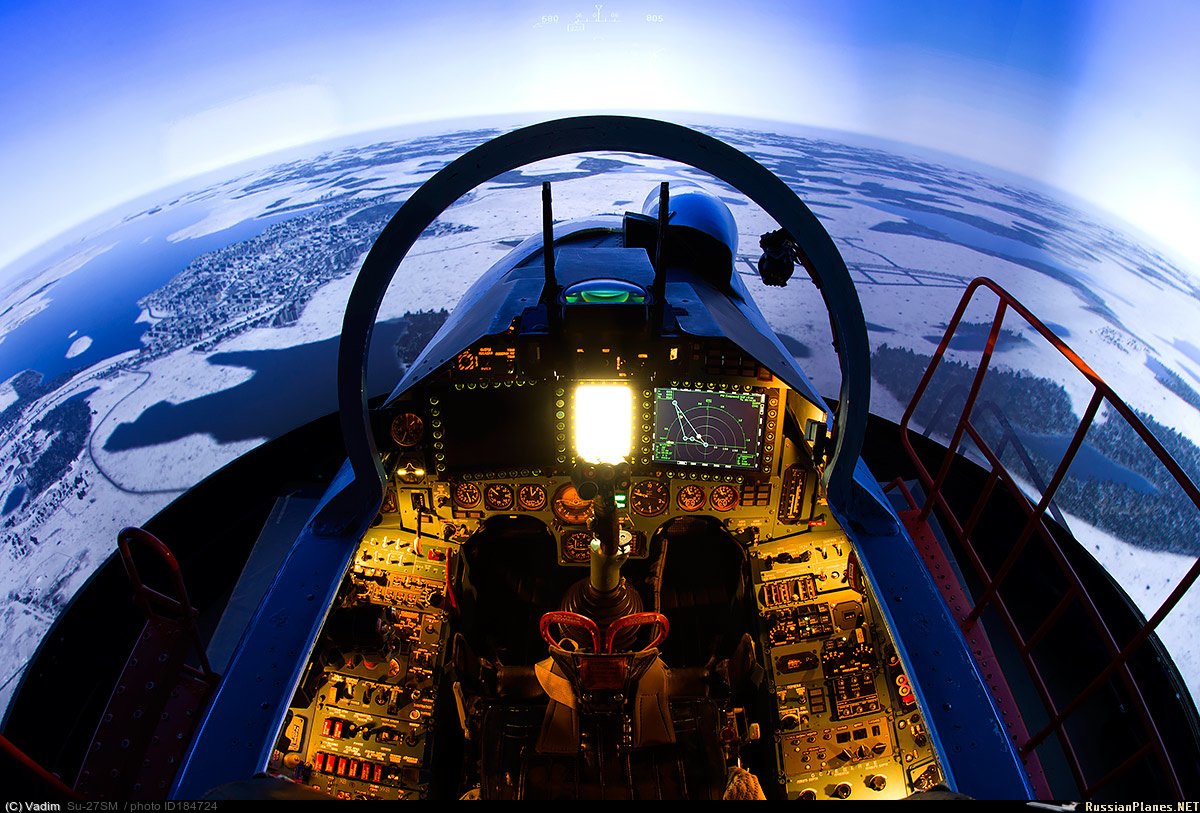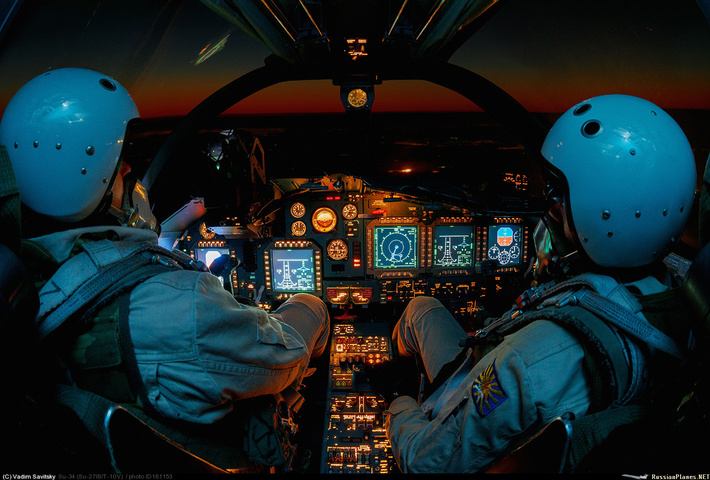HK: What is the current status of the Russian Su-35 fleet?
JB: Russia has 48 Su-35S in service with another 48 scheduled for production. They appear to offer a greater average serviceability rate than previous iterations of the Su-27/30 family, as well as the MiG-29, mainly due to the success of the new Saturn 117S thrust vectoring engines which have so far avoided many of the reliability issues of previous models. However, as with many other aspects of the Russian military, the fact that the production and service numbers of the Su-35 are quite low and exist within a huge mix of various MiG-29 and Su-27/30 derivations which do not share many key components means that running costs are high and logistics remain complex. This drives down serviceability to significantly below US, British and French fighter fleets, except in the case of small forward deployments such as Syria where the entire logistics chain can be concentrated on keeping a small portion of the force at high readines
How does it compare to Typhoon in terms of the following:
Detection/conspicuity to hostile sensors
The Su-35 has a significantly greater Radar Cross Section (RCS) than Typhoon due to its large intakes without effective fan-blade shielding, vertical dual stabilizers and thrust vectoring jet nozzles, as well as the latter’s greater use of radar absorbent materials and signature management for canards. The Su-35’s larger size and the canted position of the engines and greater thrust required also contribute to a heat signature that is significantly greater than Typhoon’s.
In terms of radars, the Su-35S’s Irbis-E PESA radar provides extremely high power levels allowing target detection beyond 300km (although without weapons which can engage at this range), as well as claimed advances in detecting low-observable threats such as stealth fighters at significantly beyond visual range. However, the downside to this is that the Irbis-E has to operate at extremely high power levels to achieve this performance and so is easily detectable and track-able at ranges beyond those at which it can track. All radars except AESAs with very low probabilities of intercept such as the F-22’s APG-77 suffer from this paradox but it is worse for the Su-35 because of the latter’s very large RCS and IR signature which means it must rely on out-ranging its opponents at BVR rather than trying to sneak up on them whilst relying on passive tracking.
Typhoon’s CAPTOR-M is comparable with the Irbis-E in terms of long range tracking and detection in active scanning mode and may be inferior with regard to detecting low-observable threats, but Typhoon has a very significant advantage in terms of passive tracking through the DASS and the world-leading PIRATE IRST.
Performance (at various altitudes, speeds and in both WVR and BVR)
Both aircraft are capable of super-cruising although the Typhoon’s speed without afterburners at combat loading is significantly higher than the Su-35*. Top speeds at low and high altitudes are comparable, but again Typhoon has the slight edge. In terms of kinematic persistence, the Su-35 burns much more more fuel to sustain energy than Typhoon, but also carries twice as much fully loaded. In prolonged engagements, the Typhoon has better combat persistence during sustained afterburner-dependent manoeuvres and also retains energy better at during high-g turns. This would tend to put the Su-35 at an increasing energy disadvantage over time, even as its thrust-to-weight ratio improves towards parity with Typhoon as it burns off fuel.
During a BVR engagement at high altitudes, assuming both aircraft have detected each other, the Su-35 is likely to be at a significant energy disadvantage as Typhoon would be flying at its higher service ceiling at faster supercruise speeds.
WVR, however, the Su-35 is extremely dangerous due to its phenomenal supermanoeuvrability due to its thrust vectoring engines and huge lifting body. Both in the horizontal and vertical planes, Typhoon would likely be outmatched by the Su-35 WVR, unless a Typhoon pilot could find space to accelerate vertically to gain an energy advantage without being shot down in the process. In reality, of course, whilst in a WVR dogfight situation the Su-35 does have a kinematic advantage, both aircraft are equipped with helmet-mounted sights to cue off-boresight missile shots and carry extremely manoeuvrable IR missiles with excellent countermeasure resistance. Neither is likely to survive a WVR ‘merge’ against the other.
*HK: The Typhoon’s maximum quoted supercruise speed has varied. EADS test pilot Chris Worning put it at M1.15-M1.2, the RAF have stated M1.1 and Typhoon pilots have suggested 1.2-3 with four conformal AMRAAMS, twin tanks and twin ASRAAMs, and 1.5 clean. The Su-35’s supercruise is marginal, probably no higher than M1.1 – it is much draggier design than the Typhoon.
Maintenance/reliability/sortie rate
Su-35 is bigger, heavier and more mechanically temperamental than Typhoon. However, it does not have such a dependence on software and computers which can cause many issues of their own in the case of Typhoon. If deployed as part of a large unified fleet by a Western air force, Su-35 could probably approach Typhoon’s reliability rate and surpass it in terms of ease of maintenance. However, the fact that Su-35 exists within a patchily resourced Russian Air Force with a myriad of different fighter types means it comes substantially below Typhoon in terms of reliability.
Defensive aids/elcectronic warfare (EW) suite
Russian EW capabilities tend to be superb. However, their defensive aids suites often lag behind their Western competitors. In the case of Su-35 and Typhoon specifically, both have some of the best DAS and EW capabilities which their respective nations can mount in frontline jets, but the exact details are highly classified. It is probably fair to assume that Typhoon has the edge in terms of defensive aids and passive ELINT gathering, whilst Su-35 has the edge in offensive EW and jamming capabilities.
Man-machine interface/ ease of flying and fighting
This is an area where Russian jets have always struggled. Even with multifunction cockpit displays and digital flight instruments, the Su-35 lags behind Typhoon in terms of ease of flying and fighting with it as a weapons system.
Network connectivity
Lack of Russian Air Force standardisation means that Typhoon wins hands down with latest generation Link 16, MIDS and other connectivity advantages. However, Russian tactical doctrine may mean that this disadvantage is less of an issue for them than it would be for a Western Air Force.
Weapons
Su-35 benefits from superb Russian missile design expertise. The multiple seeker-head mix which Russian fighters would fire in missile salvos in combat with Western fighters makes defending against them a very complicated task. At long range, the Su-35 can fire a mix of semi-active radar homing, anti-radiation (home on jam) and IR homing missiles, whilst at short range the Adder series remains as deadly as ever. Typhoon has the excellent ASRAAM and IRIS-T short range IR missiles which can equal or surpass their Russian counterparts, but at long range the AMRAAM is showing its age and against Digital Radio Frequency Memory (DRFM) jamming technology which the Su-35S employs, it’s Pk drops significantly to the point that multiple missiles would likely be required to kill each target.
Which set-ups would favour which aircraft?
High and fast in BVR combat and rules of engagement which allow long range missile shots would favour Typhoon, especially once Meteor is fully integrated next year. WVR combat, especially at lower altitudes and speeds favour the Su-35. During a sudden incident as part of, say Baltic Air Policing, where both aircraft would typically be at medium altitude and at close range during QRA intercepts, Su-35S would likely be a real handful for Typhoon.
Which aircraft, all things being equal, would have an advantage?
I would certainly still take a Typhoon going into a hypothetical ‘all things equal’ scenario, because of its superior kinematics at high altitudes and speeds which allow it to have control of an engagement except in specific scenarios.
Are there tactics which would enable a Su-35 force to take on a F-22 formation?
Simply put – no. Whilst the Su-35 does have the hypothetical capability to detect the F-22 at close ranges using its IRST and potentially the Irbis-E radar, both sensors would have to be cued to focus on exactly the right part of sky to have a chance of generating a target track. By contrast, the F-22 will know exactly where the Su-35 is at extremely long range and can position for complete control of the engagement from the outset with superior kinematics. The Su-35’s only chance would be to absorb the AMRAAM and AIM-9 shots from the F-22’s and hope that they had sufficient numbers left to attack the tankers and airbases which the F-22’s rely on post-engagement.
How do the F-22 and Su-35 compare in terms of close-in agility/energy preservation/types of fighters (angles V energy)
The Su-35 can probably out-turn an F-22 in a horizontal fight at medium and low altitudes, but the need to carry missiles and tanks externally to be effective, as well as the brute size of the Sukhoi will ensure it remains at a distinct energy disadvantage to the Raptor in terms of energy retention and acceleration at all speeds. The F-22 also will not get into an angles fight with an Sukhoi – there is simply no need for it to do so.
How do they compare in terms of BVR engagements?
...









